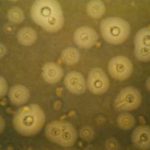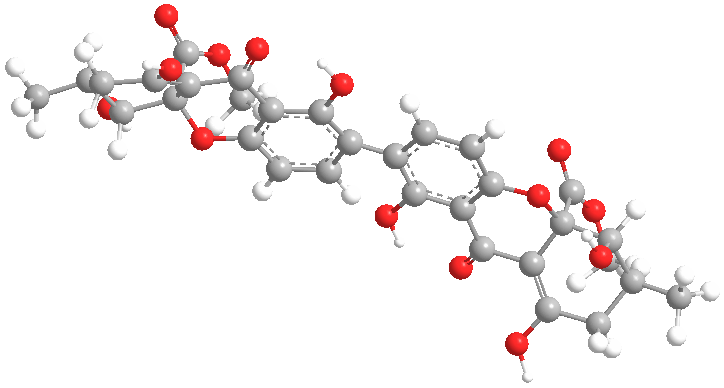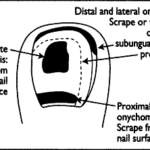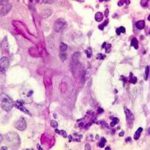Date: 26 November 2013
Secondary metabolites, 3D structure: Trivial name – Secalonic acid B
Copyright: n/a
Notes:
Species: A. aculeatusMolecular formulae: C32H30O14 Chemical abstracts number: 35287-71-9Selected references: Kurobane I, Vining LC, McInnes AG. J Antibiot (Tokyo). 1979 Dec;32(12):1256-66. Biosynthetic relationships among the secalonic acids. Isolation of emodin, endocrocin and secalonic acids from Pyrenochaeta terrestris and Aspergillus aculeatus. APSIMON JW, CORRAN JA, CREASEY NG, MARLOW W, WHALLEY WB, SIM KY. THE CHEMISTRY OF FUNGI. XLVII. THE CONSTITUTION OF ERGOCHRYSIN A, SECALONIC ACID A, AND SECALONIC ACID B. J Chem Soc. 1965 Jul;25:4144-56.
Images library
-
Title
Legend
-
BAL specimen showing hyaline, septate hyphae consistent with Aspergillus, stained with Blankophor
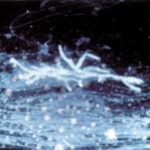
-
Mucous plug examined by light microscopy with KOH, showing a network of hyaline branching hyphae typical of Aspergillus, from a patient with ABPA.
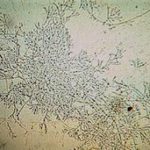
-
Corneal scraping stained with lactophenol cotton blue showing beaded septate hyphae not typical of either Fusarium spp or Aspergillus spp, being more consistent with a dematiceous (ie brown coloured) fungus
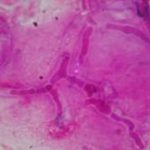
-
Corneal scrape with lactophenol cotton blue shows separate hyphae with Fusarium spp or Aspergillus spp.
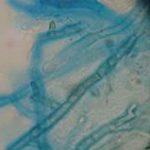
-
A filamentous fungus in the CSF of a patient with meningitis that grew Candida albicans in culture subsequently.
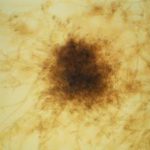
-
Transmission electron micrograph of a C. neoformans cell seen in CSF in an AIDS patients with remarkably little capsule present. These cells may be mistaken for lymphocytes.
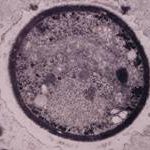
-
India ink preparation of CSF showing multiple yeasts with large capsules, and narrow buds to smaller daughter cells, typical of C. neoformans
